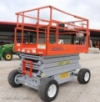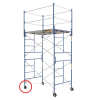sputnam
Elite Member
- Joined
- Apr 24, 2012
- Professional Status
- Certified General Appraiser
- State
- North Carolina
The tape is as accurate, to the required level, as your Disto. No one cares what the dimension is down to the nearest 0.001. The Disto can be faster... sometimes... but, as is evident from the OP, it has cons as well as pros. The 'stretch' is factored into the markings. You do have to deal with sag.. but, that's an operator error.I can take that fiberglass tape and stretch it more than 2" or it could be loose more than 2", my distro is accurate down to a fraction of an inch.
Last edited:



